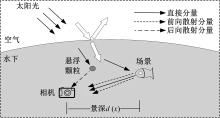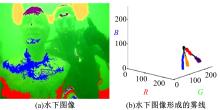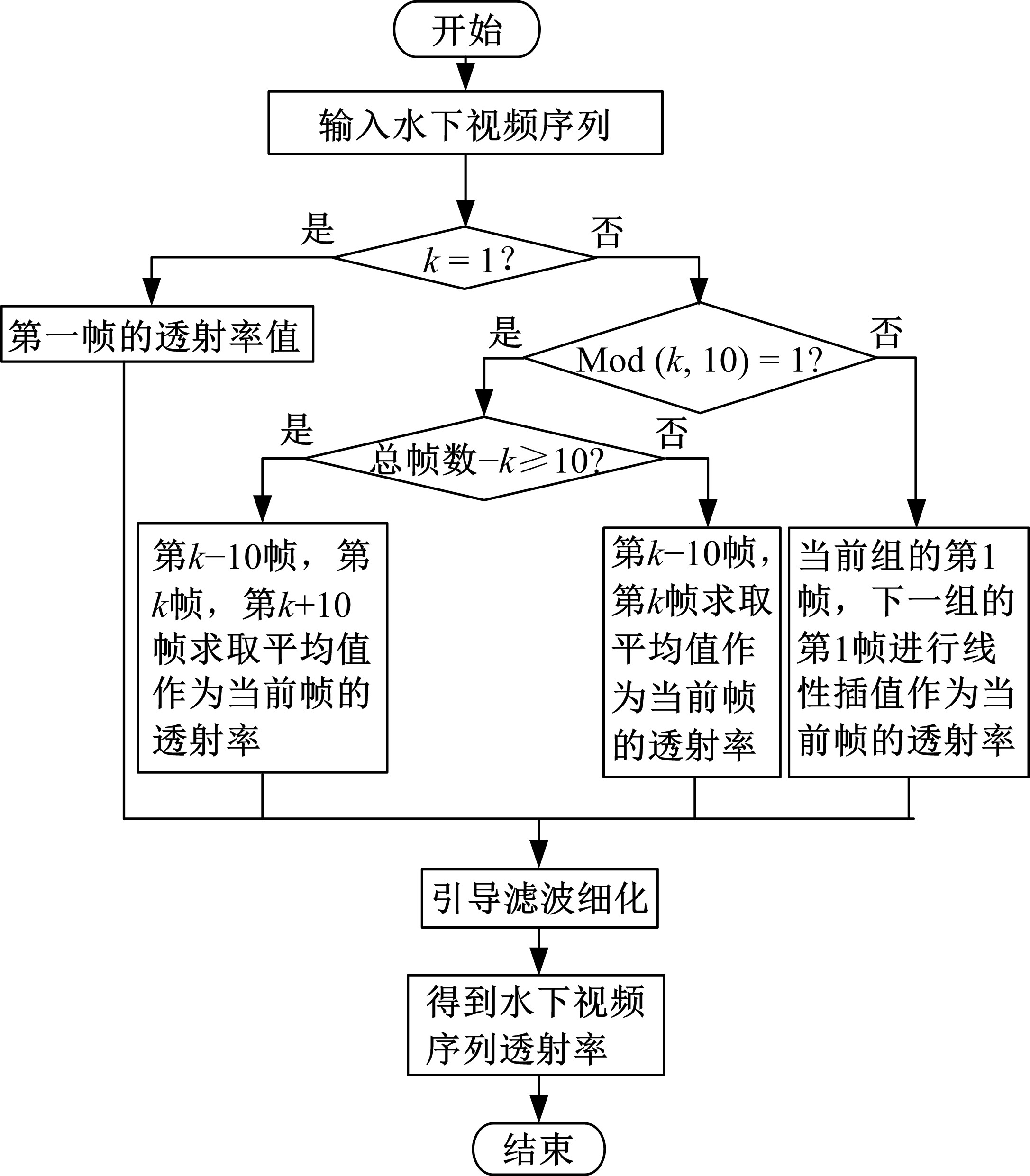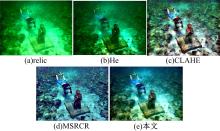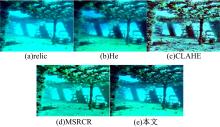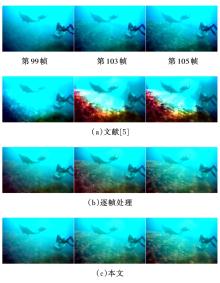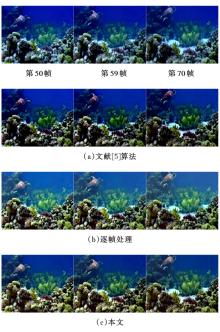Journal of Jilin University(Engineering and Technology Edition) ›› 2020, Vol. 50 ›› Issue (2): 668-677.doi: 10.13229/j.cnki.jdxbgxb20190344
Clearing strategy of underwater video image
Yan-fen CHENG( ),Li-juan YAO,Qiao YUAN,Xian-qiao CHEN
),Li-juan YAO,Qiao YUAN,Xian-qiao CHEN
- School of Computer Science and Technology, Wuhan University of Technology, Wuhan 430063, China
CLC Number:
- TP391.4
| 1 | 徐岩, 孙美双. 基于卷积神经网络的水下图像增强方法[J]. 吉林大学学报: 工学版, 2018, 48(6): 1895-1903. |
| Xu Yan, Sun Mei-shuang. Enhancing underwater image based on convolutional neural networks[J]. Journal of Jilin University (Engineering and Technology Edition), 2018, 48(6): 1895-1903. | |
| 2 | 李一兵, 付强, 张静. 水下模糊图像参数估计复原方法[J]. 吉林大学学报: 工学版, 2013, 43(4): 1133-1138. |
| Li Yi-bing, Fu Qiang, Zhang Jing. Underwater blurred image restoration based on parameter estimation[J]. Journal of Jilin University (Engineering and Technology Edition), 2013, 43(4): 1133-1138. | |
| 3 | John J, Wilscy M. Enhancement of weather degraded video sequences using wavelet fusion[C]∥IEEE International Conference on Cybernetic Intelligent Systems, London, UK, 2008: 1-6. |
| 4 | Yoon I, Kim S, Kim D, et al. Adaptive defogging with color correction in the HSV color space for consumer surveillance system[J]. IEEE Transactions on Consumer Electronics, 2012, 58(1): 111-116. |
| 5 | Qing C, Yu F, Xu X, et al. Underwater video dehazing based on spatial-temporal information fusion[J]. Multidimensional Systems & Signal Processing, 2016, 27(4): 909-924. |
| 6 | Mcglamery B L. A computer model for underwater camera systems[J]. Proc Spie, 1980(208): 221-231. |
| 7 | 杨淼, 纪志成. 基于模糊形态筛和四元数的水下彩色图像增强[J]. 仪器仪表学报, 2012, 33(7): 1601-1605. |
| Yang Miao, Ji Zhi-cheng. Underwater color image enhancement based on fuzzy morphological sieve and quaternion[J]. Chinese Journal of Scientific Instrument, 2012, 33(7): 1601-1605. | |
| 8 | 黄冬梅, 宋巍, 王龑, 等. 一种基于相对全局直方图拉伸的浅海水下图像增强方法[P]. 中国CN107067386 A, 2017⁃04⁃24. |
| 9 | Berman D, Treibitz T, Avidan S. Non-local image dehazing[C]∥Computer Vision and Pattern Recognition, Las Vegas, NV, USA, 2016: 1674-1682. |
| 10 | Wang M, Mai J, Liang Y, et al. Component-based distributed framework for coherent and real-time video dehazing[C]∥IEEE International Conference on Computational Science and Engineering, Guangzhou, China, 2017: 321-324. |
| 11 | 窦易文, 周鸣争, 唐肝翌, 等. 焦点引导的带颜色恢复的多尺度Retinex算法[J]. 计算机工程与应用,2013, 49(2): 207-210. |
| Dou Yi-wen, Zhou Ming-zheng, Tang Gan-yi, et al. Focus-guided multi-scale Retinex algorithm with color restoration[J]. Computer Engineering and Applications, 2013, 49(2): 207-210. | |
| 12 | He K, Sun J, Tang X. Single image haze removal using dark channel prior[C]∥Computer Vision and Pattern Recognition, 2009, Miami, Florida, USA, 2009: 1956-1963. |
| 13 | Hitam M S, Awalludin E A, Wan N J H W Y, et al. Mixture contrast limited adaptive histogram equalization for underwater image enhancement[C]∥International Conference on Computer Applications Technology, Bali, Indonesia, 2013: 1-5. |
| [1] | Fu LIU, Mei-jing QUAN, Ke WANG, Yun LIU, Bing KANG, Zhi-wu HAN, Tao HOU. Indoor positioning method based on location fingerprinting of imitating mechanism of scorpion vibration source [J]. Journal of Jilin University(Engineering and Technology Edition), 2019, 49(6): 2076-2082. |
| [2] | Xiao-hui YU,Zhi-cheng ZHANG,Xin-bo LI,Xiao-dong SUN. Parameter estimation of exponentially damped sinusoidsbased on state⁃space model [J]. Journal of Jilin University(Engineering and Technology Edition), 2019, 49(6): 2083-2088. |
| [3] | Zi-ji MA,Hao LU,Yan-ru DONG. Dual path convolutional neural network forsingle image super⁃resolution [J]. Journal of Jilin University(Engineering and Technology Edition), 2019, 49(6): 2089-2097. |
| [4] | Yang LU,Shi-gang WANG,Wen-ting ZHAO,Yan ZHAO. Facial expression recognition based on separability assessment of discrete Shearlet transform [J]. Journal of Jilin University(Engineering and Technology Edition), 2019, 49(5): 1715-1725. |
| [5] | Chao DONG,Jing⁃hong LIU,Fang XU,Ren⁃hao WANG. Fast ship detection in optical remote sensing images [J]. Journal of Jilin University(Engineering and Technology Edition), 2019, 49(4): 1369-1376. |
| [6] | Ke⁃yan WANG,Yan HU,Huai WANG,Yun⁃song LI. Image dehazing algorithm by sky segmentation and superpixel⁃level dark channel [J]. Journal of Jilin University(Engineering and Technology Edition), 2019, 49(4): 1377-1384. |
| [7] | Lu⁃tao LIU,Na LI. Source detection based on coprime array [J]. Journal of Jilin University(Engineering and Technology Edition), 2019, 49(3): 986-993. |
| [8] | Tohtonur,Hai⁃long ZHANG,Jie WANG,Na WANG,Xin⁃chen YE,Wan⁃qiong WANG. High speed median filtering algorithm based on graphics processing unit [J]. Journal of Jilin University(Engineering and Technology Edition), 2019, 49(3): 979-985. |
| [9] | Yin⁃juan FU,Yong LI,Li⁃qin XU,Kun⁃hui ZHANG. Design and analysis of NLFM⁃Costas RF stealth radar signal [J]. Journal of Jilin University(Engineering and Technology Edition), 2019, 49(3): 994-999. |
| [10] | YING Huan,LIU Song-hua,TANG Bo-wen,HAN Li-fang,ZHOU Liang. Efficient deterministic replay technique based on adaptive release strategy [J]. Journal of Jilin University(Engineering and Technology Edition), 2018, 48(6): 1917-1924. |
| [11] | LIU Zhong-min,WANG Yang,LI Zhan-ming,HU Wen-jin. Image segmentation algorithm based on SLIC and fast nearest neighbor region merging [J]. Journal of Jilin University(Engineering and Technology Edition), 2018, 48(6): 1931-1937. |
| [12] | SHAN Ze-biao,LIU Xiao-song,SHI Hong-wei,WANG Chun-yang,SHI Yao-wu. DOA tracking algorithm using dynamic compressed sensing [J]. Journal of Jilin University(Engineering and Technology Edition), 2018, 48(6): 1938-1944. |
| [13] | QUAN Wei, HAO Xiao-ming, SUN Ya-dong, BAI Bao-hua, WANG Yu-ting. Development of individual objective lens for head-mounted projective display based on optical system of actual human eye [J]. 吉林大学学报(工学版), 2018, 48(4): 1291-1297. |
| [14] | YAO Hai-yang, WANG Hai-yan, ZHANG Zhi-chen, SHEN Xiao-hong. Reverse-joint signal detection model with double Duffing oscillator [J]. 吉林大学学报(工学版), 2018, 48(4): 1282-1290. |
| [15] | CHEN Tao, CUI Yue-han, GUO Li-min. Improved algorithm of multiple signal classification for single snapshot [J]. 吉林大学学报(工学版), 2018, 48(3): 952-956. |
|
||
